Shumai are traditional Chinese dumplings filled with meat, vegetables and spices. Costco is carrying these Synear Shumai Dumplings in the frozen section, so you can enjoy this popular dim sum item in the comfort of your own home! The question is, are these dumplings as good as your favorite local dim sum restaurant’s?
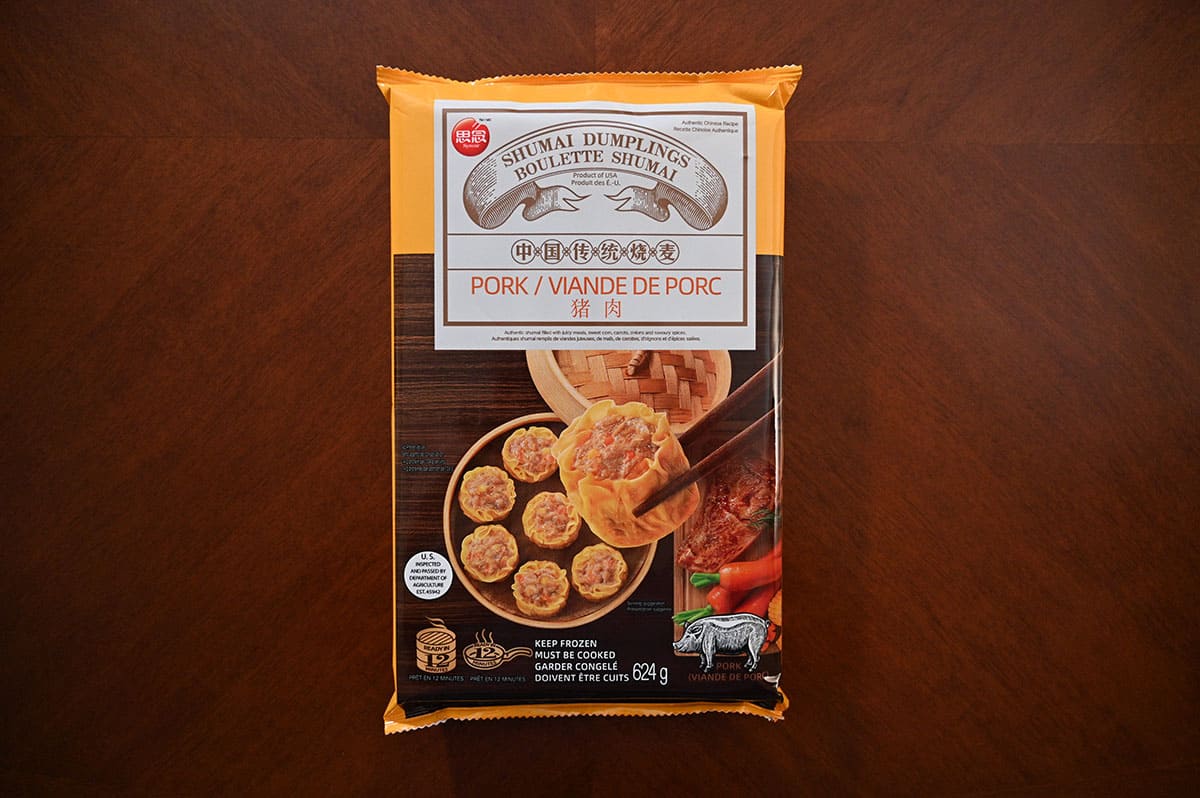
Any time my Costco carries a new kind of dumpling, gyoza, potstick, egg roll or spring roll I pick it up to review. Both Sean and I love dumplings so I’m excited to be reviewing these Costco Shumai Dumplings!
Similar products from Costco are the Bibigo Steamed Dumplings, Synear Soup Dumplings, Bibigo Beef Bulgogi Mandu, Summ! Sesame Ginger Chicken Gyoza Dumplings, Made Fresh Foods BBQ Pork Buns, Bibigo Chicken and Cilantro Wontons and Siwin Chicken Potstickers.
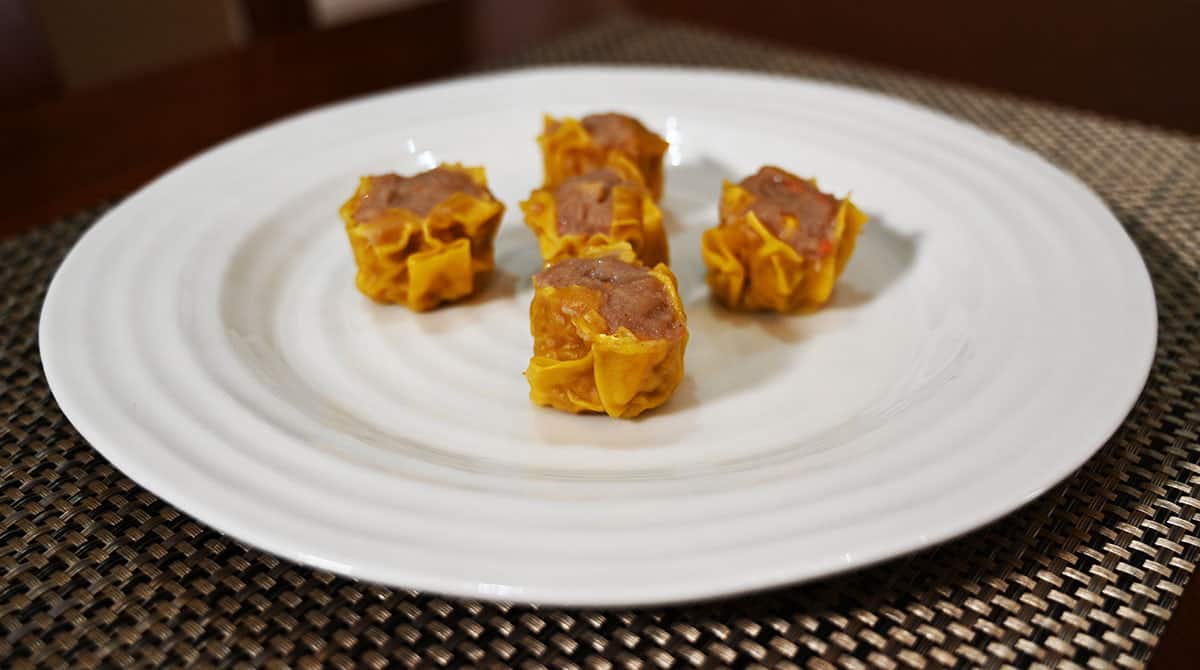
Location in Store
These dumplings are located in the freezer section at Costco, the item number is 1670987.
Taste
The dumplings are very meaty. Aside from the wrapper, they’re pretty much all meat. The pork is seasoned nicely, though the seasoning isn’t overly strong. Some bites actually reminded me a bit of a pork breakfast sausage. There aren’t any flavors that stood out to me in the seasoning or otherwise.
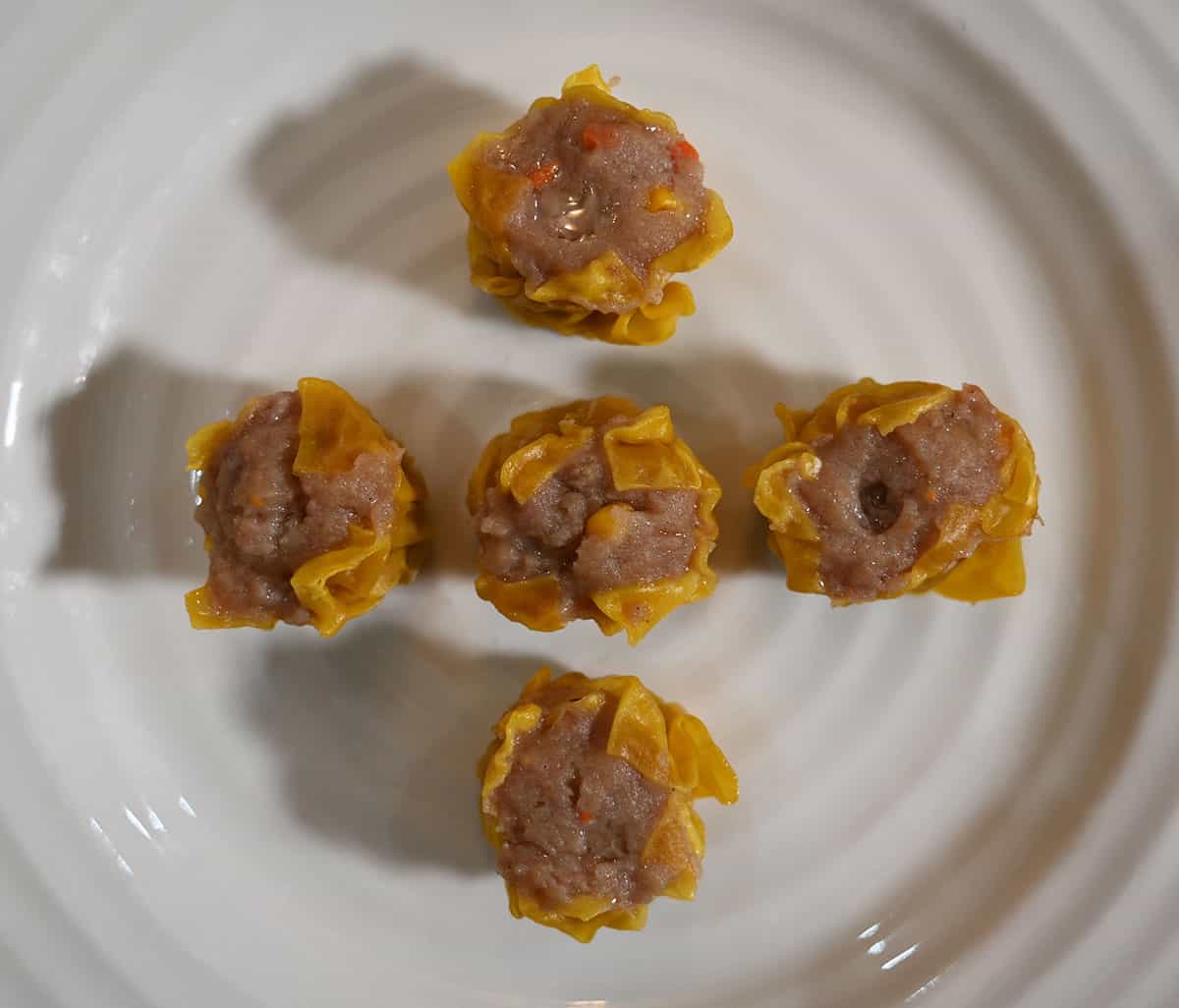
My biggest complaint is the quality of the meat. The pork has a fair bit of gristle and grittiness. It’s not enough to ruin the dumplings, but it’s definitely noticeable. I think the vegetables in the dumplings add some texture too, but it was kind of hard to tell when the crunchiness was from a vegetable chunk vs. gristle in the pork at times. Corn seems like a bit of an odd ingredient in dumplings to me, but it certainly adds some texture.
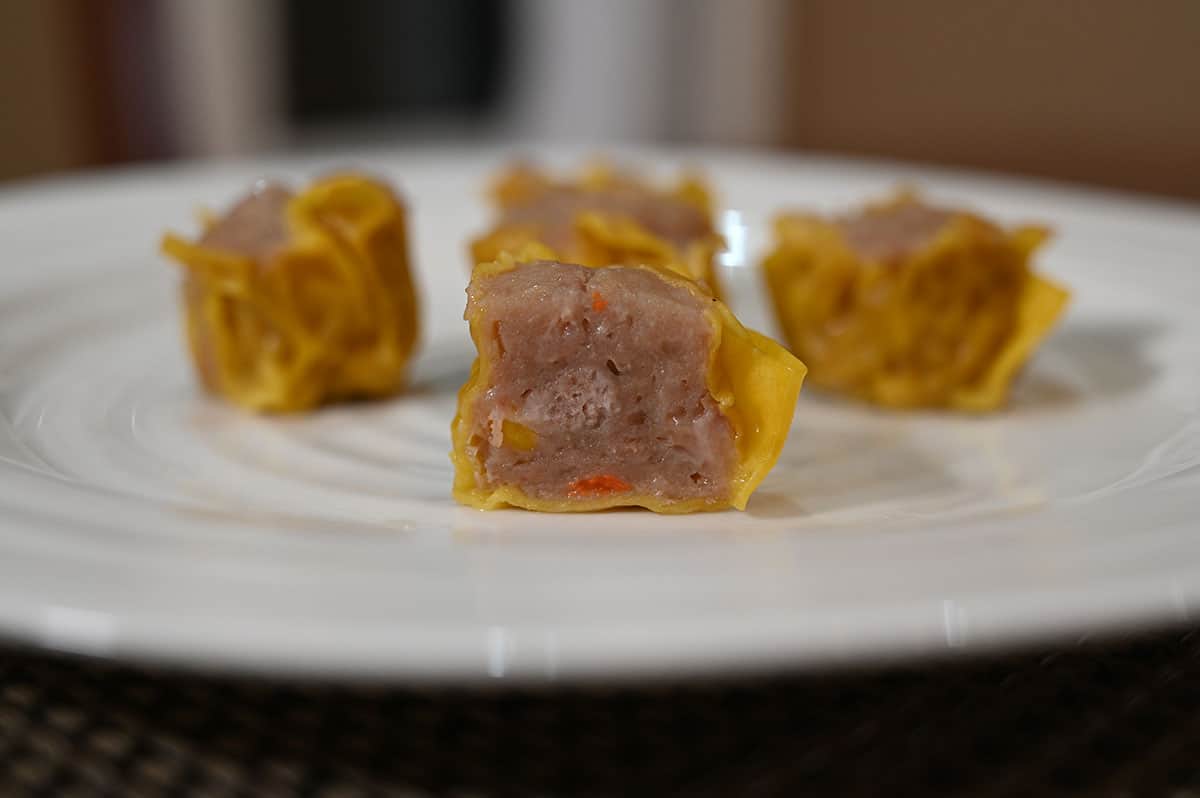
There are a couple of other things I didn’t like about these dumplings. They were a little on the greasy side, but not too bad. The dumplings don’t come with any sort of sauce, which was a bit disappointing as a lot of my other favorite dumplings from Costco come with tasty sauces.
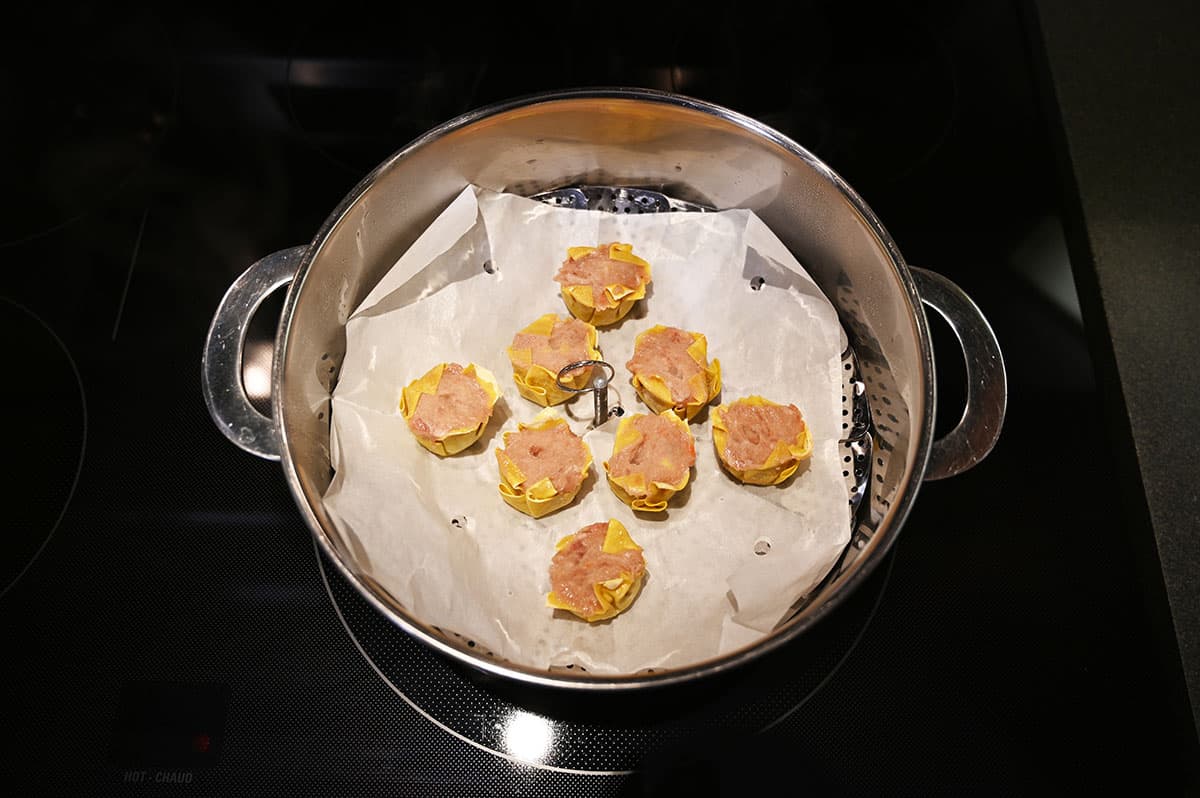
We tried both streaming and pan-frying the dumplings (the two methods listed on the instructions). I would say they turned out similarly both ways, but steaming was certainly easier and less messy.
Cost
The 624-gram package contains 24 dumplings and costs $12.99 Canadian. This isn’t cheap and there are other similar products at Costco that are less expensive.
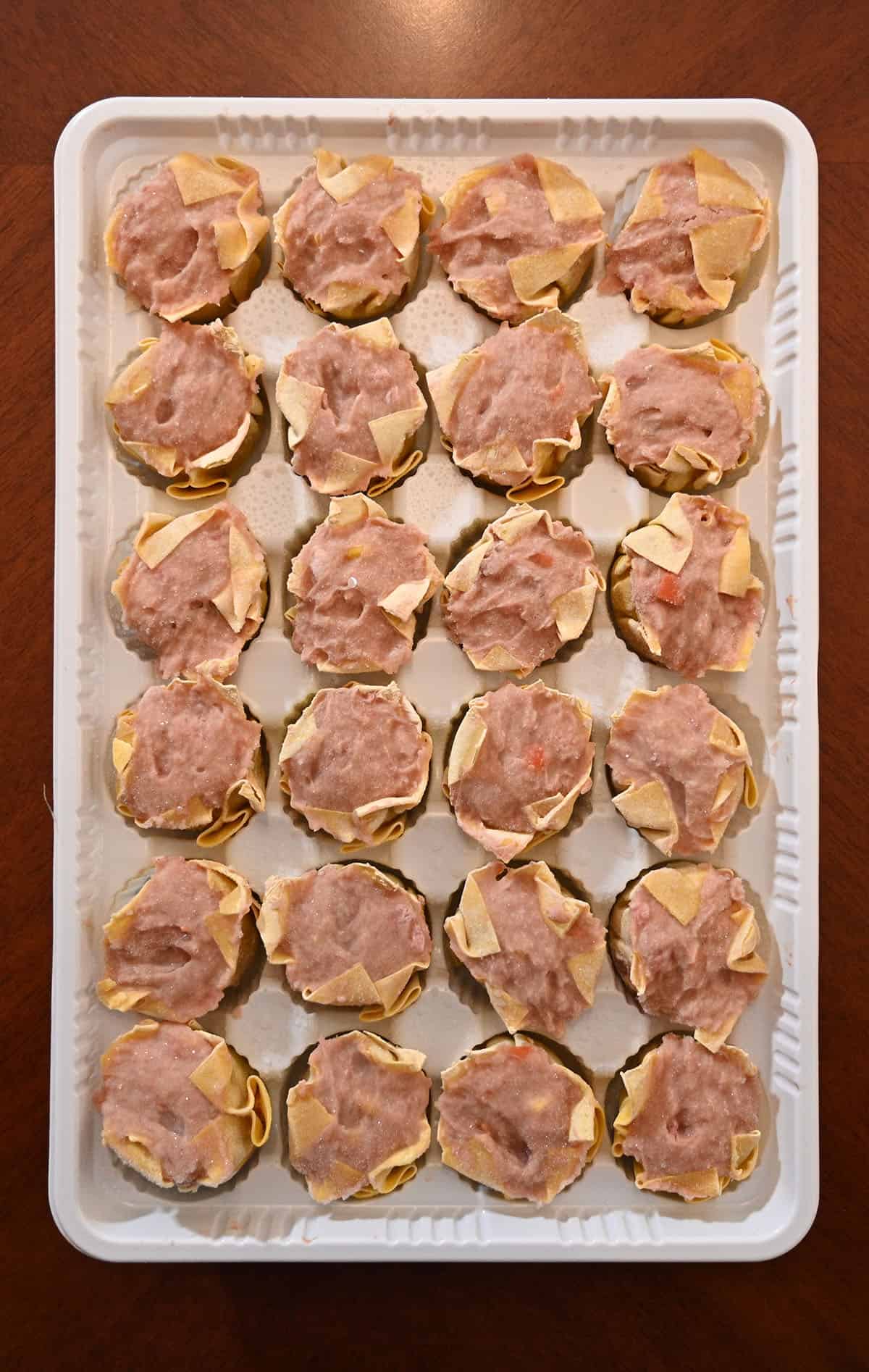
Convenience
There are two different cooking directions on the package of the dumplings. You can choose to pan-fry the dumplings in a skillet or use a stove-top steamer to cook them. The steamer method is preferred as per the packaging.
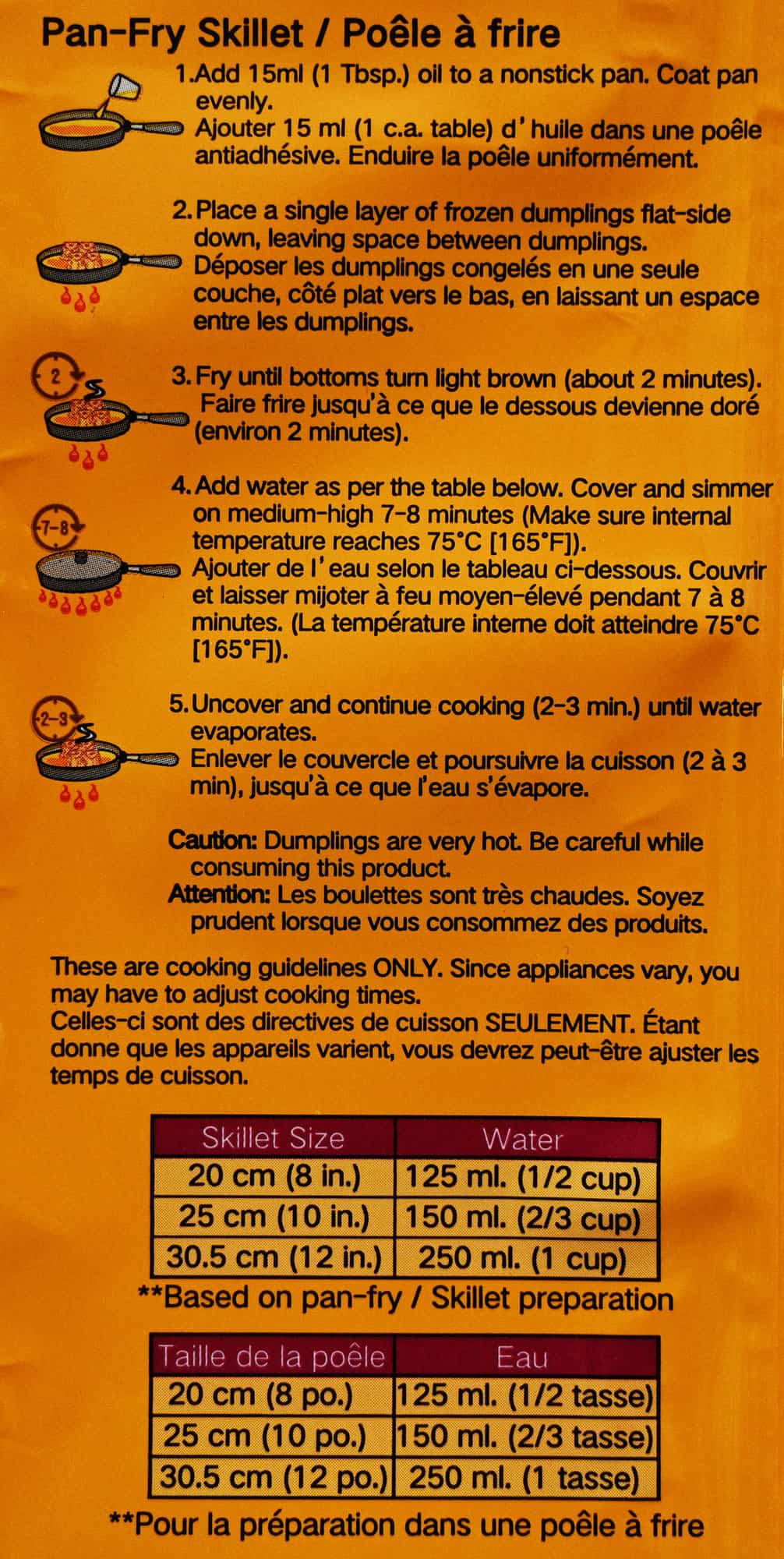
As I said before, the steaming method is actually easier and less messy so I suggest cooking the dumplings that way. The package comes with two steaming papers to use, which I’ve never seen or used before!
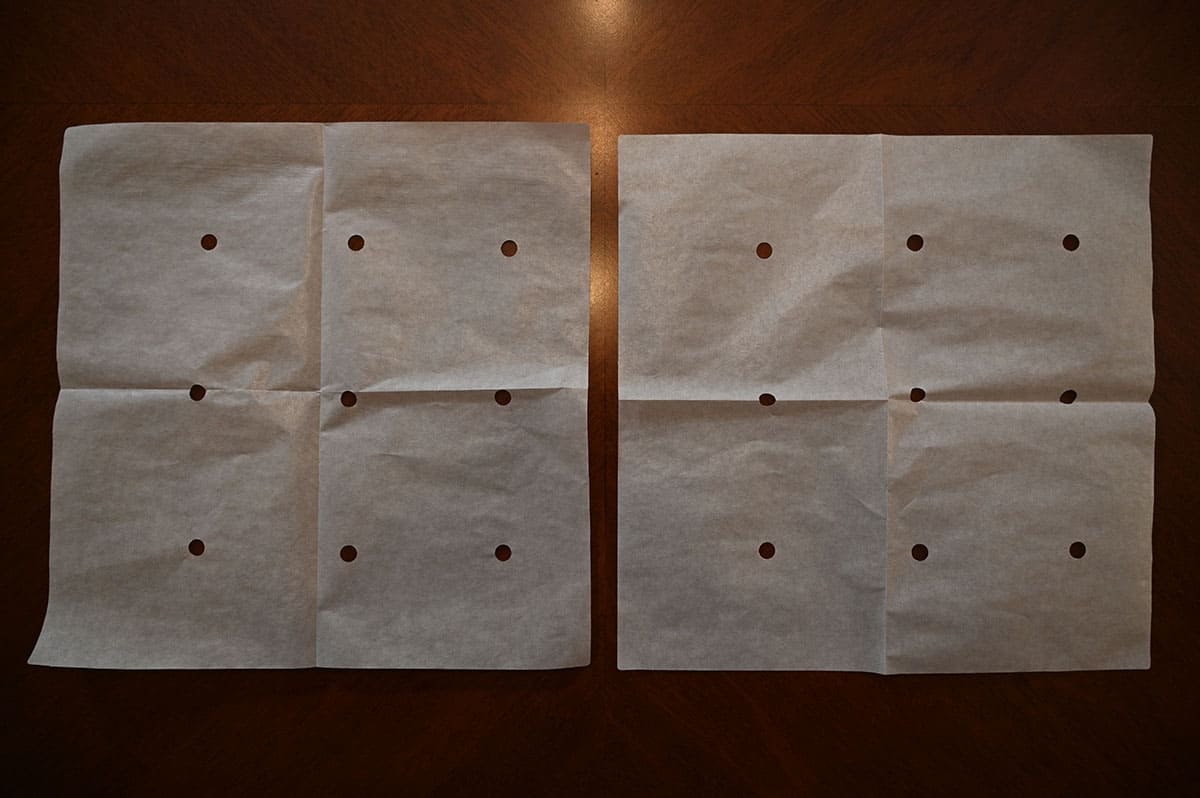
The dumplings need to be kept frozen and the best-before date is about ten months from when we purchased the dumplings. There is no sauce in the package but we served the dumplings with soy sauce. They’d be fine on their own too, without any sauce.
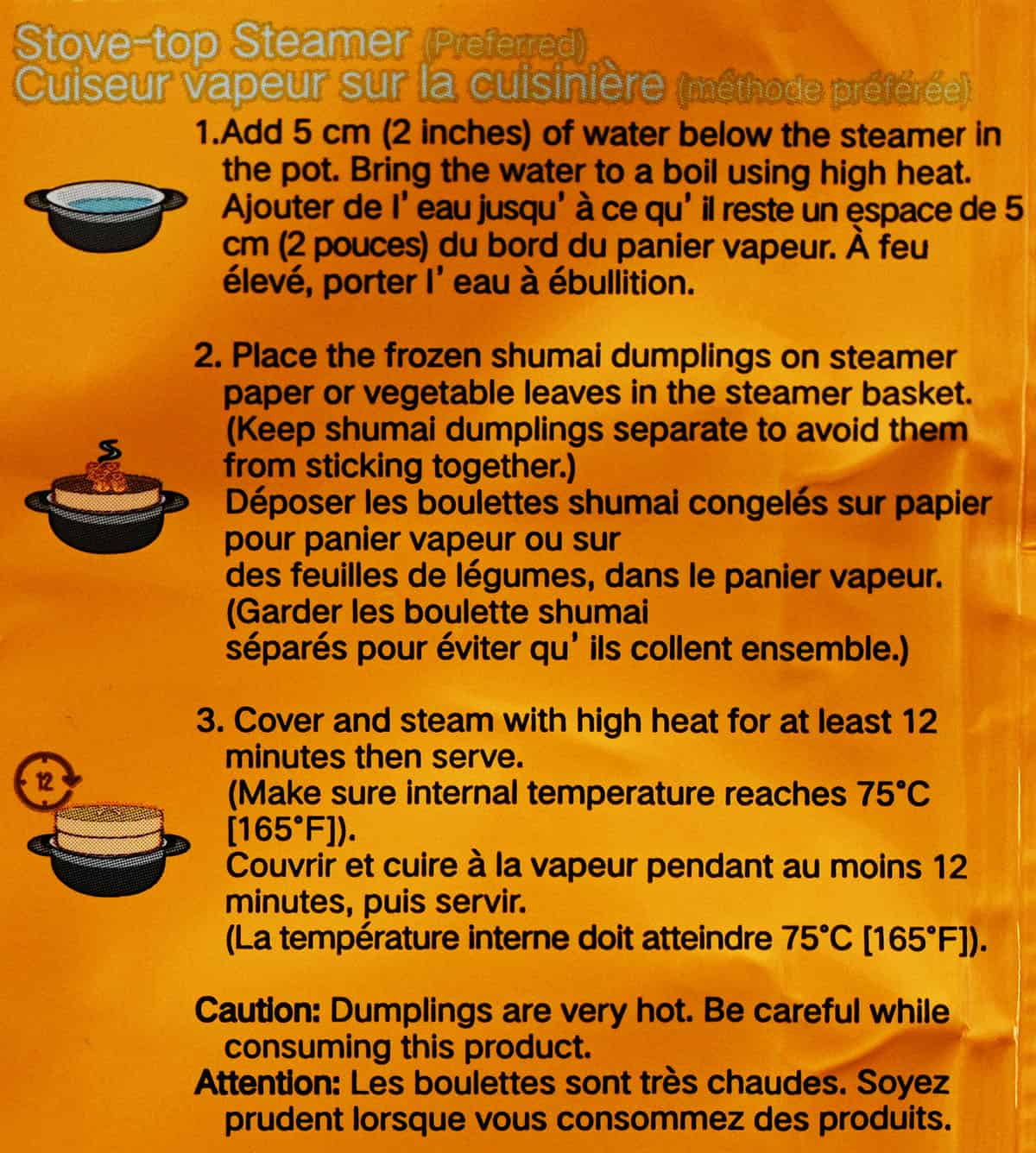
Nutrition
Calories
Four dumplings contain 190 calories, eight grams of fat, 15 grams of carbohydrates, one gram of fibre, three grams of sugar, 14 grams of protein and 400 milligrams of sodium.
The fat content is most likely coming from the pork, it’s nice that there’s 14 grams of protein in four dumplings. The dumplings aren’t huge though so it’s very easy to eat way more than four!
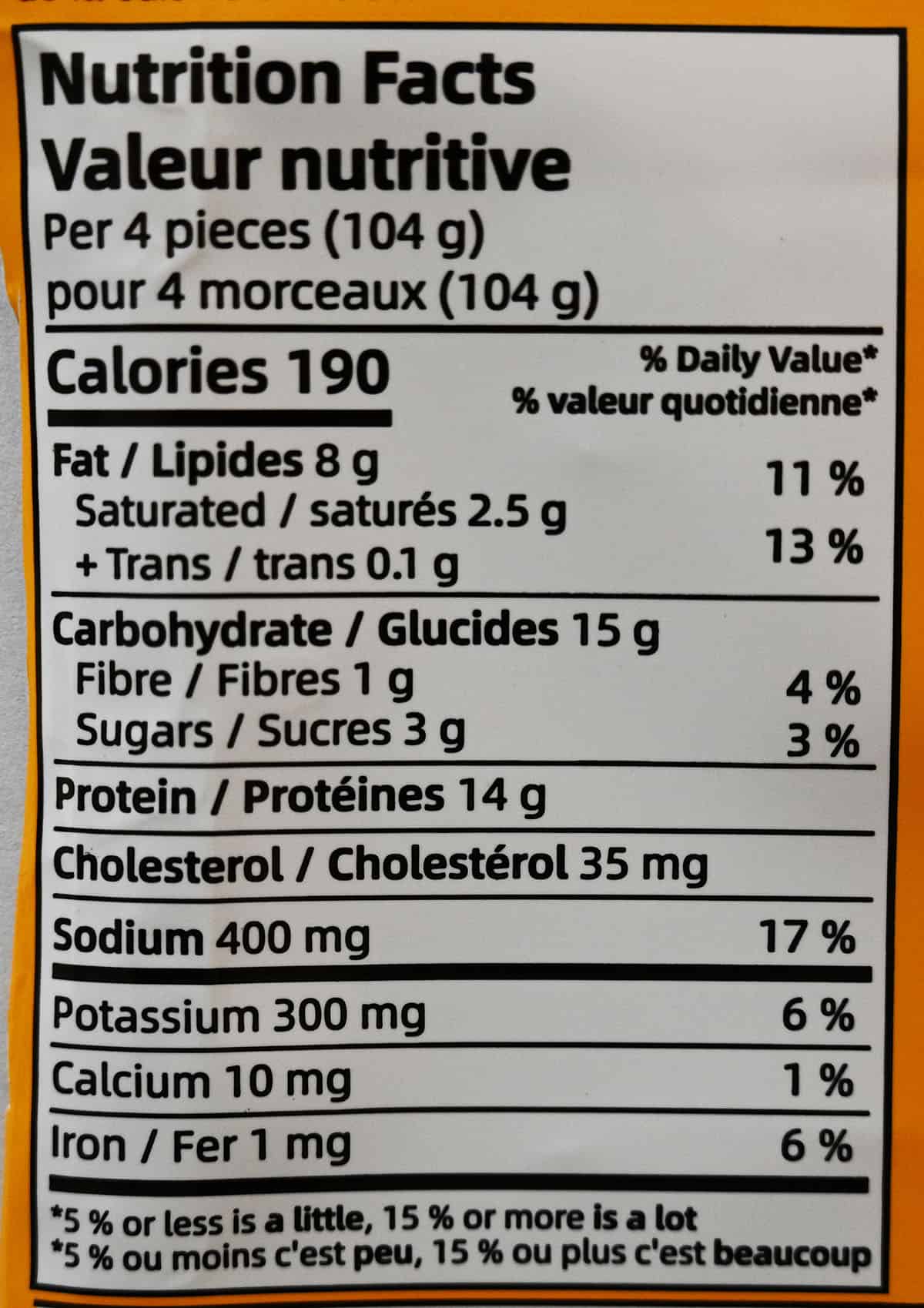
Ingredients
The first ingredient in the filling is pork which makes sense because these are quite meaty! The dumplings contain sesame, wheat, soy, oyster and wheat gluten so the dumplings are not gluten-free but are dairy free!
I had to look up what lye water is and it’s a strong alkaline solution that’s used often in Asian and African cooking to create different textures and flavors.
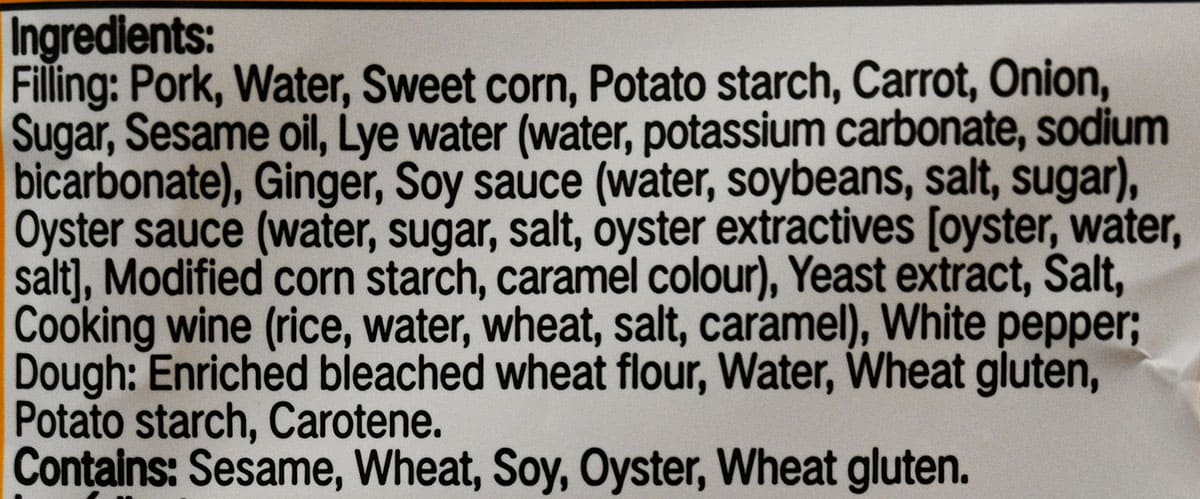
Scoring
Taste: 6.5/10
Cost: 8/10
Convenience: 10/10
Nutrition: 8/10
Overall
Walk on by.
These pork dumplings are okay but not great, I think Costco has a few better options. I don’t think they’ll be replacing my favorites and I probably won’t buy them again.
Have you tried these dumplings before? What did you think of them?
Please note that this review was not paid for or sponsored by any third party. This product was purchased by Costcuisine for the purpose of producing this review. The opinions in this review are strictly those of Costcuisine. Costcuisine is not affiliated with Costco or any of its suppliers. In the event that Costcuisine receives compensation for a post from the manufacturer of a product or some other third party, the arrangement will be clearly disclosed (including where the manufacturer of a product provides Costcuisine with a free sample of the product).


il n’y a plus de shumai chez COSTCO,le produit a été discontinué
It’s so strange to me to see Cantonese siumai reviewed as if they are the same as potstickers. Just because something is (loosely interpreted) called a dumpling because wrapped in starch does not make every Asian item the same, any more than you would compare an empanada to a sub sandwich. Comparing siumai to mandu, soup dumplings, and pork buns is mind-boggling.
Cantonese siumai are dim sum items. Though many restaurants and companies take shortcuts nowadays, the proper method to prep the fill is for the meat to be roughly *minced*, not ground. Having a good chew texture with a proper bite and “crunch,” rather than a smooth paste, is important both for moisture and flavour retention in the meat and what is considered the correct texture for siumai, compared to say…a fish ball soup, where the fish balls are expected to be bouncy and smooth in texture. Carrots, shiitake mushrooms, bamboo shoots, water chestnuts, and other things can be added to create this crunch texture. Other things that HK chefs rate on siumai quality are for the starch (most commonly cornstarch is used as a binder for the mince) flavour and texture to be barely noticeable if not nonexistent, the wrapper texture to be not too thick and not gummy.
Unlike items like cheung fun, siumai are also not supposed to come with sauce. Even with something as simple as steamed dumplings or potstickers, some regions prefer sticky sweet soy, others prefer an even mix of soy and black vinegar with freshly julienned ginger and chopped scallions, and others only do red vinegar. Still other people prefer roasted chili oil. (The potstickers are a Northern dish and not traditionally dim sum – Cantonese / HK – items, by the way. The Cantonese versions are smaller and steamed with thin translucent skin, less served in restaurants because they are finicky to make and get gummy quickly if not served immediately.) The most common condiments you would get on the table at dim sum restaurants would be roasted chili oil and hot mustard paste, which you apply to any item, including siumai, as to your preference. They are not “sauce” that has to accompany the dish. There may be soy sauce on the table, but if you need to use it, most likely the food is not properly seasoned. Soy sauce on siumai sounds like salt overload. I wouldn’t expect a bag of frozen French fries to come with catsup.
That said, you’re allowed to not like something. Just please rate the products in the way they are supposed to be made and eaten, and don’t make comparisons between unrelated foodstuffs from countries and regions across the world. If you don’t know, then Google is your friend.
Also, to the person above, siumai is the food item, not the filling. Though some variation of pork, shrimp, or the combo are common because they are easily available, they can be made with chicken or any meat, with things like crab and abalone being some of the premium versions in high-end dim sum restaurants.
I went to COSTCO Kingston yesterday and hey didnt have the Synear Shumai dumplings. Is this a promotion only or will they be available all the time? Also do you know if all COSTCO carries these?
Looking for product without : starch , potassium bicarbonate and other preservatives or chemicals …
natalie, any meat less dim sum/dumpling suggestions? thank you, g.
Hmmm the only ones I can think of are the Summ! Crispy Vegetable Spring Rolls from Costco!
When we get Shao Mai at Blue Sky and other places they often have chunks of shrimp mixed in with the pork. Don’t see shrimp listed though.